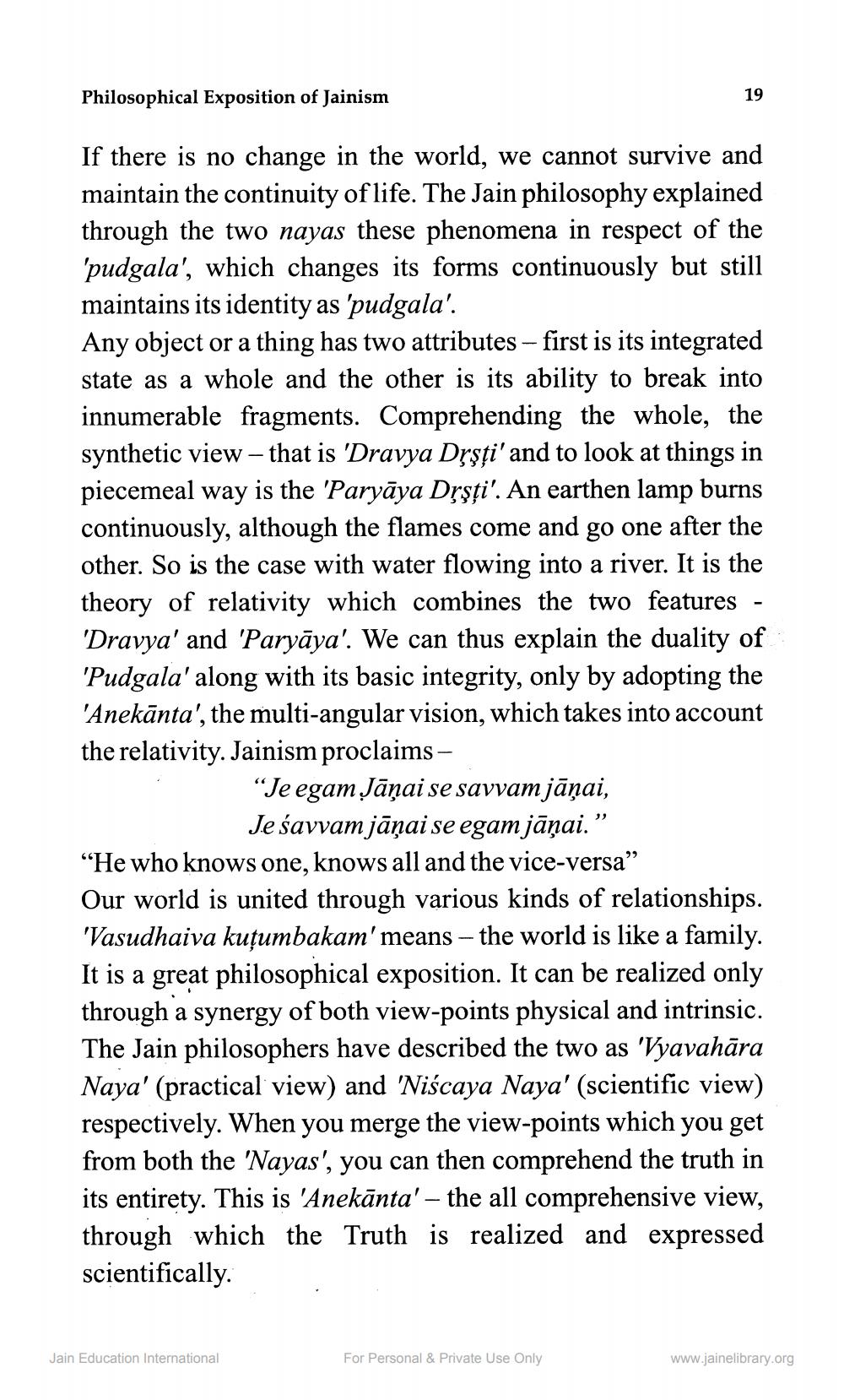________________
Philosophical Exposition of Jainism
If there is no change in the world, we cannot survive and maintain the continuity of life. The Jain philosophy explained through the two nayas these phenomena in respect of the 'pudgala', which changes its forms continuously but still maintains its identity as 'pudgala'. Any object or a thing has two attributes – first is its integrated state as a whole and the other is its ability to break into innumerable fragments. Comprehending the whole, the synthetic view – that is 'Dravya Dışți' and to look at things in piecemeal way is the 'Paryāya Drşți'. An earthen lamp burns continuously, although the flames come and go one after the other. So is the case with water flowing into a river. It is the theory of relativity which combines the two features - 'Dravya' and 'Paryāya'. We can thus explain the duality of 'Pudgala' along with its basic integrity, only by adopting the 'Anekānta', the multi-angular vision, which takes into account the relativity. Jainism proclaims -
"Je egam Jāņai se savvam jāņai,
Je śavvam jāņai se egam jāņai.” “He who knows one, knows all and the vice-versa” Our world is united through various kinds of relationships. 'Vasudhaiva kuțumbakam' means - the world is like a family. It is a great philosophical exposition. It can be realized only through a synergy of both view-points physical and intrinsic. The Jain philosophers have described the two as 'Vyavahāra Naya' (practical view) and 'Niścaya Naya' (scientific view) respectively. When you merge the view-points which you get from both the 'Nayas', you can then comprehend the truth in its entirety. This is 'Anekānta' – the all comprehensive view, through which the Truth is realized and expressed scientifically
Jain Education International
For Personal & Private Use Only
www.jainelibrary.org




